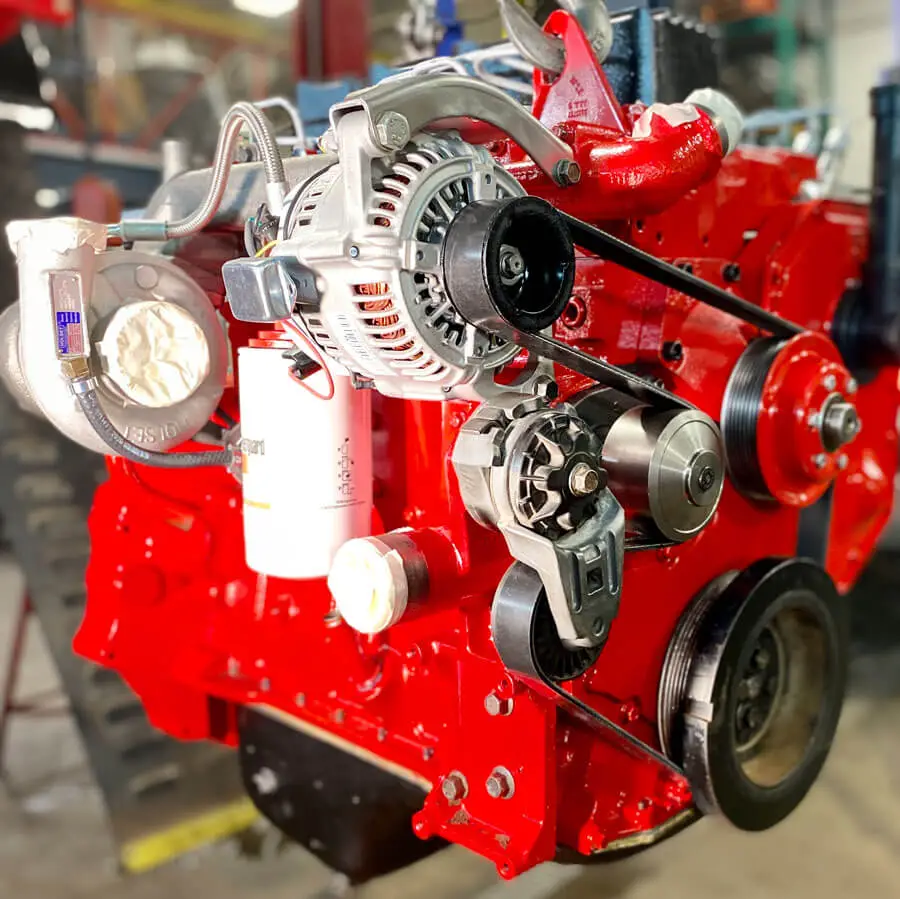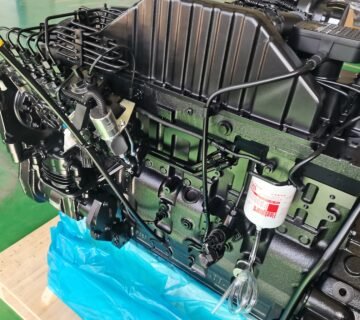Comparing Stock vs. Modified Cummins Engines – Pros and Cons
Cummins diesel engines have earned a sterling reputation for their brute strength, longevity, and versatility. From powering commercial trucks to agricultural machinery, these engines are built to withstand extreme conditions. However, owners often face a critical decision: Should they stick with the factory-designed stock Cummins engine, or invest in modified Cummins engines to unlock higher performance? This article breaks down the advantages and drawbacks of both options, helping you determine which path aligns with your needs—whether you prioritize reliability, power, or a balance of both. 
What Defines a Stock Cummins Engine?
A stock Cummins engine refers to the factory-built configuration, calibrated to meet OEM (Original Equipment Manufacturer) specifications. These engines are optimized for durability, emissions compliance, and broad usability across industries. Key characteristics include:
– Factory-Calibrated ECM: The Engine Control Module (ECM) manages fuel injection, turbo boost, and emissions systems within strict parameters.
– Emissions Compliance: Stock engines include components like Diesel Particulate Filters (DPF), Exhaust Gas Recirculation (EGR), and Selective Catalytic Reduction (SCR) to meet regulatory standards.
– Warranty Protection: Unmodified engines are typically covered by Cummins or vehicle manufacturer warranties.
Stock engines excel in predictable, low-risk applications but may leave performance enthusiasts wanting more.
The Appeal of Modified Cummins Engines
Modified Cummins engines involve aftermarket upgrades to enhance power, efficiency, or adaptability. Common modifications include:
– ECM Tuning: Reprogramming the engine’s computer to adjust fuel maps, turbo pressure, and torque curves.
– Hardware Upgrades: Installing performance turbochargers, high-flow injectors, or upgraded intercoolers.
– Emissions Deletes: Removing DPF, EGR, or SCR systems to reduce maintenance and improve efficiency (where legal).
These changes cater to users seeking specialized performance, but they come with trade-offs.
Stock vs. Modified Cummins Engines: Key Comparisons
- Performance and Power Output
– Stock Engines: Designed for balanced performance, stock Cummins engines deliver reliable horsepower and torque within factory limits. For example, the 6.7L Cummins in RAM trucks produces up to 420 hp and 1,075 lb-ft of torque—sufficient for most towing and hauling needs.
– Modified Engines: Tuning and hardware upgrades can push power figures significantly. A modified 6.7L Cummins with a compound turbo setup and injector upgrades may exceed 600 hp and 1,200 lb-ft of torque, ideal for racing or extreme off-roading.
Verdict: Modified engines dominate in raw power, but stock engines offer consistency.
- Fuel Efficiency
– Stock Engines: Optimized for emissions compliance, stock engines may sacrifice fuel efficiency under heavy loads due to restrictive emissions systems.
– Modified Engines: Deleting emissions components and optimizing combustion through tuning can improve fuel economy by 10–15%. However, aggressive tuning for power often reduces mileage.
Verdict: Modifications can enhance efficiency but require careful calibration.
- Reliability and Longevity
– Stock Engines: Cummins’ factory builds are tested for millions of miles, ensuring minimal breakdowns. Regular maintenance can extend their lifespan beyond 500,000 miles.
– Modified Engines: While quality upgrades improve performance, pushing power limits strains components like pistons, head gaskets, and transmissions. Poorly executed mods may halve engine life.
Verdict: Stock engines win for longevity; modified engines demand meticulous upkeep.
- Cost Considerations
– Stock Engines: Lower upfront costs and warranty coverage reduce financial risk. Maintenance is predictable, with OEM parts widely available.
– Modified Engines: Initial mods (e.g., tuning, turbo upgrades) can cost $2,000–$10,000. Add ongoing expenses for premium fuel, synthetic oils, and reinforced drivetrain parts.
Verdict: Stock engines are budget-friendly; modifications are a long-term investment.
- Legal and Warranty Implications
– Stock Engines: Fully compliant with emissions laws and eligible for warranty claims.
– Modified Engines: Emissions deletes are illegal in many regions, risking fines. Modifications void most factory warranties.
Verdict: Stock engines avoid legal hassles; modified builds require caution.
Who Should Choose a Stock Cummins Engine?
Stock configurations are ideal for:
– Commercial Fleets: Minimize downtime and repair costs.
– Daily Drivers: Prioritize reliability and warranty coverage.
– Emission-Sensitive Regions: Avoid legal penalties.
Who Benefits from a Modified Cummins Engine? 
Modifications shine for:
– Performance Enthusiasts: Seeking horsepower for racing or off-grid adventures.
– Heavy Haulers: Needing extra torque for oversized loads.
– Legacy Engine Owners: Modernizing older Cummins engines (e.g., 12-valve 5.9L) with turbo upgrades.
Risks of Modifying Your Cummins Engine
- Component Failure: Over-stressed parts may fail catastrophically.
- Resale Challenges: Modified engines appeal to niche buyers, lowering resale value.
- Insurance Issues: Insurers may deny claims if modifications are deemed a liability.
To mitigate risks, partner with certified Cummins diesel specialists and use proven aftermarket brands like BD Diesel or Fleece Performance.
Hybrid Approach: Balancing Stock and Modified
Some owners adopt a middle ground:
– Light Tuning: Use plug-and-play tuners (e.g., Edge Products) for modest power gains without deleting emissions.
– OEM+ Upgrades: Install Cummins-approved parts, like high-capacity intercoolers, to retain warranty benefits.
This strategy offers a taste of enhanced performance while preserving reliability.
Conclusion: Match Your Engine to Your Ambitions
The choice between stock and modified Cummins engines hinges on your priorities. Stock engines deliver unmatched reliability and compliance, making them a safe bet for most users. Modified engines, meanwhile, cater to those willing to trade predictability for exhilarating performance—provided they accept the costs and risks.
Before deciding, ask: Are you building a workhorse or a powerhouse? Your answer will steer you toward the right configuration.





No comment